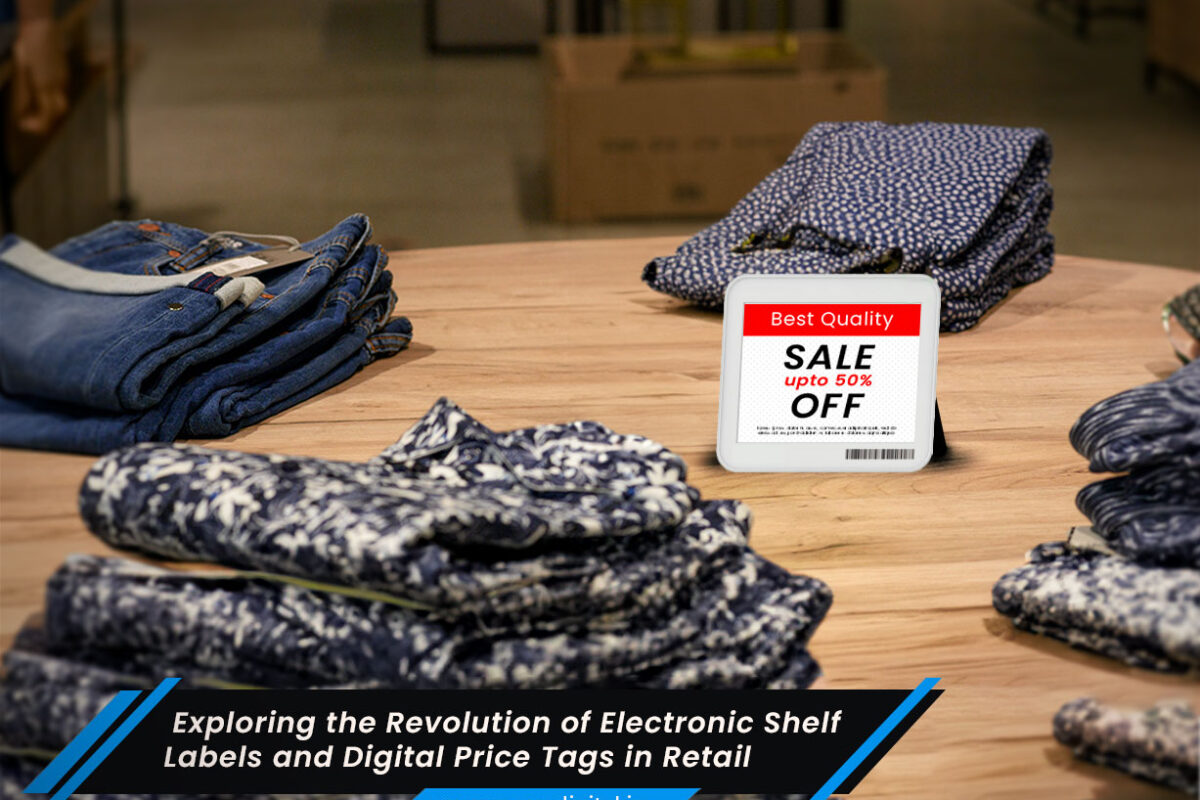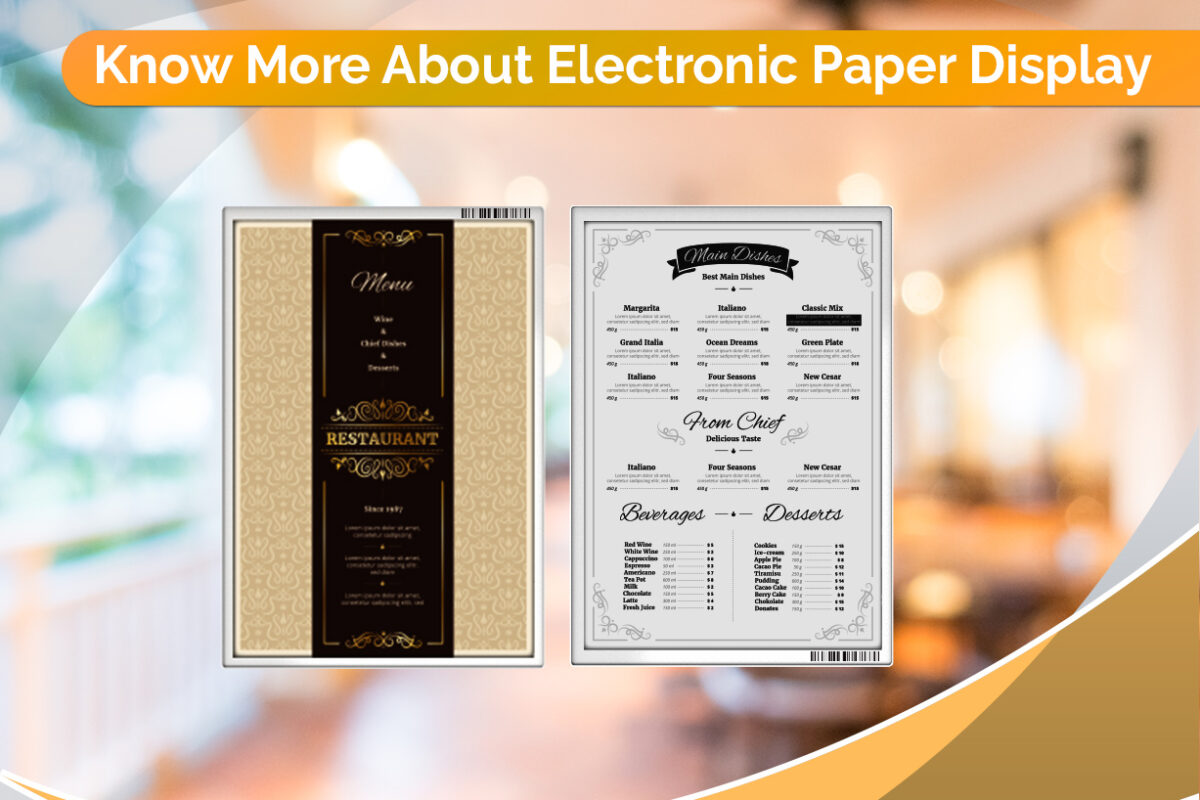In the ever-evolving landscape of retail, technology continues to play a pivotal role in shaping the way businesses operate and interact with customers. One such innovation that is transforming the traditional retail experience is the advent of Electronic Shelf Labels (ESL) and Digital Price Tags. In this comprehensive blog post, we will delve into the myriad applications, advantages, and future implications of ESL and digital price tags in retail environments. From enhancing pricing accuracy to enabling dynamic promotions, these digital solutions are revolutionizing the way products are priced, labeled, and presented to consumers.
Understanding Electronic Shelf Labels
A. The Evolution of Pricing Displays:
Traditional paper price tags have long been the standard in retail, but they come with inherent challenges such as manual updates, potential pricing errors, and time-consuming processes. Electronic Shelf Labels (ESL) represent a leap forward in this regard, offering a dynamic and automated solution for displaying product prices and information.
B. How Electronic Shelf Labels Work:
ESL systems typically consist of digital displays attached to store shelves, connected to a central server. These displays can be updated remotely, allowing retailers to change prices, update promotions, and synchronize information across multiple locations in real-time. The wireless communication infrastructure ensures seamless connectivity, making the pricing process more efficient and accurate.
C. Benefits of Electronic Shelf Labels:
1. Pricing Accuracy and Consistency
ESL systems significantly reduce the risk of pricing errors that may occur with manual labeling. Prices can be updated instantly, ensuring consistency across all shelves and minimizing the chances of discrepancies between the shelf and the point of sale.
2. Dynamic Pricing Strategies
Retailers can implement dynamic pricing strategies more effectively with ESL. Prices can be adjusted based on factors such as demand, time of day, or even competitor pricing. This flexibility allows retailers to stay competitive in a fast-paced market.
3. Time and Labor Savings
Automating the pricing update process eliminates the need for manual label changes. This not only saves time for store staff but also reduces the potential for errors associated with manual data entry.
4. Improved Customer Experience
ESL enables a more interactive and engaging shopping experience. Customers can easily access detailed product information, promotions, and even reviews directly from the digital display, enhancing their overall shopping experience.
Digital Price Tags
A. Beyond Traditional Pricing:
Digital Price Tags (DPT) expand the capabilities of pricing displays beyond mere numbers. These tags can incorporate various elements, such as digital screens, allowing retailers to showcase additional information, graphics, and even advertisements directly on the shelf.
B. Advanced Features and Functionality:
1. Rich Media Content
Digital price tags enable retailers to display rich media content, such as images and videos, providing customers with a more immersive and informative experience. This feature is particularly beneficial for showcasing product features, demonstrations, and promotions.
2. Integration with Inventory Systems
DPT systems can be integrated with inventory management systems, allowing real-time tracking of stock levels. When a product is running low, the digital display can automatically update to reflect the availability status or trigger alerts for restocking.
3. Interactive Elements
Some digital price tags incorporate interactive elements, such as touch screens or QR codes, allowing customers to access additional information, reviews, or even place orders directly from the shelf.
Enhancing the Retail Experience
A. Personalized Shopping Experience:
The implementation of ESL and digital price tags opens the door to a more personalized shopping experience. Retailers can use customer data and preferences to tailor promotions and recommendations, displayed directly on the shelf. This level of personalization fosters customer loyalty and satisfaction.
B. Real-Time Promotions and Marketing:
ESL and digital price tags empower retailers to run real-time promotions and marketing campaigns. Whether it’s a flash sale, a limited-time discount, or a new product launch, these digital displays provide a platform for immediate and eye-catching communication with customers.
C. Streamlining Inventory Management:
The integration of ESL and digital price tags with inventory management systems enhances the efficiency of stock control. Retailers can monitor product levels in real-time, reducing the likelihood of stockouts or overstock situations. This data-driven approach improves inventory turnover and contributes to a more optimized supply chain.
Overcoming Implementation Challenges
A. Initial Investment and ROI:
While the benefits of ESL and digital price tags are significant, the initial investment can be a barrier for some retailers. However, it’s essential to view this technology as a long-term investment that yields returns through improved operational efficiency, reduced errors, and enhanced customer satisfaction.
B. Staff Training and Change Management:
Introducing new technology requires adequate training for store staff. Ensuring that employees are comfortable with the new systems and understand their benefits is crucial for a smooth transition. Change management strategies should be in place to address any resistance and facilitate a positive shift in the working environment.
C. Data Security and Privacy Concerns:
The connectivity of ESL and digital price tag systems raises concerns about data security and customer privacy. Retailers must implement robust security measures to protect customer information and ensure compliance with data protection regulations. Transparent communication about data usage and privacy policies is essential to build and maintain customer trust.
The Future of Retail Technology
A. Integration with IoT and AI:
The future of ESL and digital price tags lies in their integration with the Internet of Things (IoT) and Artificial Intelligence (AI). IoT connectivity can enable even more advanced features, such as sensors that track customer movement and engagement with products. AI algorithms can analyze customer behavior to provide personalized recommendations and optimize pricing strategies.
B. Sustainability Initiatives:
As environmental sustainability becomes a priority for businesses and consumers alike, the design and production of ESL and digital price tags are likely to align with eco-friendly practices. Reduced energy consumption, recyclable materials, and efficient end-of-life disposal strategies will be integral to the development of these technologies.
C. Expanded Use Cases Beyond Retail:
The versatility of ESL and digital price tags extends beyond traditional retail environments. Industries such as healthcare, hospitality, and logistics can benefit from these technologies for inventory management, pricing updates, and information dissemination.
Conclusion
In conclusion, the adoption of Electronic Shelf Labels and Digital Price Tags marks a significant milestone in the evolution of retail technology. These digital solutions not only address longstanding challenges associated with traditional pricing methods but also open new possibilities for enhanced customer experiences and operational efficiency. As technology continues to advance, ESL and digital price tags will play a pivotal role in shaping the future of retail, providing businesses with the tools they need to thrive in an increasingly competitive and tech-driven market.


